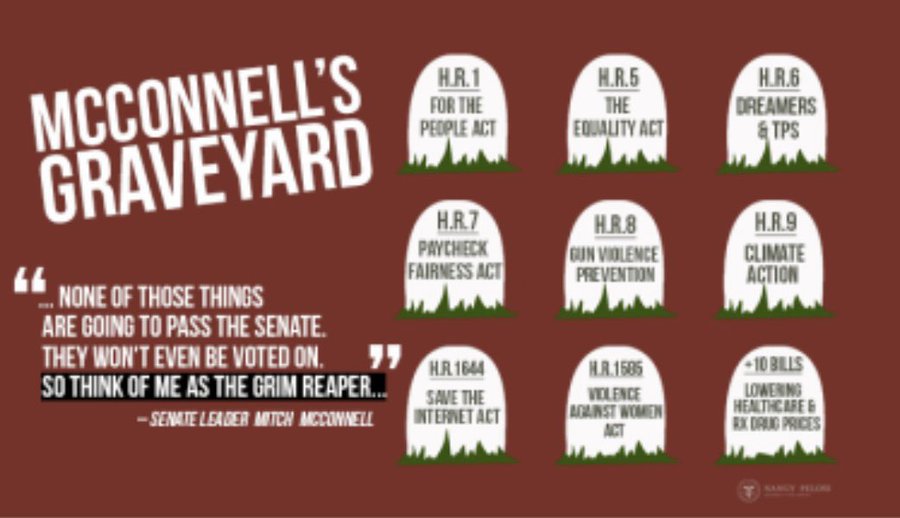To watch this tribute on YouTube: https://www.youtube.com/watch?v=ekKUmaL2R2g
Tuesday, December 3, 2019
VIDEO: Christmas tree shopping is harder than ever
Blame climate change and demographics
James Robert Farmer, Indiana University
If you’re shopping for a live Christmas tree this year, you may have to search harder than in the past.
Over the last five years Christmas tree shortages have been reported in many parts of the U.S.
One factor is that growers sold off land and planted fewer trees during and after the 2008 recession.
In the lifespan of Christmas trees, the decade from 2008 to the present is roughly a single generation of plantings. However, in my research on the human dimensions of farming and food systems, I also see other factors at play.
Christmas trees take 6 to 12 years to mature, and consumer preferences often change more quickly than farmers can adjust. Climate change is altering temperature and rainfall patterns, which severely affects growers’ ability to produce high-quality trees and the varieties that customers seek. And like the overall U.S. population, Christmas tree growers and shoppers are aging.
Collectively, these trends don’t bode well for Christmas tree lovers, the growers or the industry.
However, there are opportunities for younger farmers to enter this market, either full- or part-time. If new and beginning growers live in an area with appropriate environmental conditions, Christmas trees are a high-quality complementary crop that farmers can use to diversify their operations and provide off-season income.
Evolving consumer preferences
As of 2017, there were about 15,000 Christmas tree farms across the U.S. Most are around 23 acres in size, and nearly half of them gross less than US$25,000 annually. A great number of Christmas tree ventures are part of larger farm operations, and many growers hold off-the-farm jobs.
Our team recently sent a survey to 1,500 randomly selected Indiana residents to see how consumer behavior could affect the state’s tree farmers.
Christmas tree shoppers told us that they predominantly seek short-needle trees, such as firs and spruces (38%), followed by medium-needle varieties like Scotch pines (24%).
Over 42% of respondents purchased their tree from a Christmas tree farm, while nearly 32% bought them from a tree lot or other small business, and approximately 20% got their tree from large chain or retail stores such as Home Depot or Lowes.
A national consumer survey conducted by the National Christmas Tree Association found that shoppers equally purchased trees from Christmas tree farms (28%) and large chain retailers (28%), followed closely by retail lots (23%).
According to the association’s data, from 2004-2017 the number of real Christmas trees sold stayed relatively steady, while the number of artificial trees sold more than doubled. Real tree growers have lost market share to increasingly popular artificial trees, and may have trouble seriously competing for the foreseeable future, due to climate change and an aging population.
James Robert Farmer, Indiana University
 |
| Christmas trees at Twin H Tree Farms in Bloomington, Indiana. Indiana University/James Brosher, CC BY-ND |
Over the last five years Christmas tree shortages have been reported in many parts of the U.S.
One factor is that growers sold off land and planted fewer trees during and after the 2008 recession.
In the lifespan of Christmas trees, the decade from 2008 to the present is roughly a single generation of plantings. However, in my research on the human dimensions of farming and food systems, I also see other factors at play.
Christmas trees take 6 to 12 years to mature, and consumer preferences often change more quickly than farmers can adjust. Climate change is altering temperature and rainfall patterns, which severely affects growers’ ability to produce high-quality trees and the varieties that customers seek. And like the overall U.S. population, Christmas tree growers and shoppers are aging.
Collectively, these trends don’t bode well for Christmas tree lovers, the growers or the industry.
However, there are opportunities for younger farmers to enter this market, either full- or part-time. If new and beginning growers live in an area with appropriate environmental conditions, Christmas trees are a high-quality complementary crop that farmers can use to diversify their operations and provide off-season income.
Evolving consumer preferences
 |
| Workers deliver the 2018 U.S. Capitol Christmas Tree to the U.S. Capitol Building, Nov. 26, 2018, from Willamette National Forest in Oregon. AP Photo/Pablo Martinez Monsivais |
Our team recently sent a survey to 1,500 randomly selected Indiana residents to see how consumer behavior could affect the state’s tree farmers.
Christmas tree shoppers told us that they predominantly seek short-needle trees, such as firs and spruces (38%), followed by medium-needle varieties like Scotch pines (24%).
Over 42% of respondents purchased their tree from a Christmas tree farm, while nearly 32% bought them from a tree lot or other small business, and approximately 20% got their tree from large chain or retail stores such as Home Depot or Lowes.
A national consumer survey conducted by the National Christmas Tree Association found that shoppers equally purchased trees from Christmas tree farms (28%) and large chain retailers (28%), followed closely by retail lots (23%).
According to the association’s data, from 2004-2017 the number of real Christmas trees sold stayed relatively steady, while the number of artificial trees sold more than doubled. Real tree growers have lost market share to increasingly popular artificial trees, and may have trouble seriously competing for the foreseeable future, due to climate change and an aging population.
“Tommy Tooth sez….”
Brush your
teeth to protect the heart
Sophia Antipolis, European Society
of Cardiology
 Brushing teeth frequently is linked
with lower risks of atrial fibrillation and heart failure, according to a study
published in the European Journal of Preventive Cardiology, a
journal of the European Society of Cardiology (ESC).
Brushing teeth frequently is linked
with lower risks of atrial fibrillation and heart failure, according to a study
published in the European Journal of Preventive Cardiology, a
journal of the European Society of Cardiology (ESC).
Previous research suggests that poor
oral hygiene leads to bacteria in the blood, causing inflammation in the body.
Inflammation increases the risks of atrial fibrillation (irregular heartbeat)
and heart failure (the heart’s ability to pump blood or relax and fill with
blood is impaired).
This study examined the connection between oral hygiene and occurrence of these two conditions.
This study examined the connection between oral hygiene and occurrence of these two conditions.
Yet more evidence that Trump cooked his books
Trump Tax Records Reveal New Inconsistencies — This Time for Trump Tower
By Heather Vogell for ProPublica
 Donald Trump’s business reported conflicting information about a key metric to New York City property tax officials and a lender who arranged financing for his signature building, Trump Tower in Manhattan, according to tax and loan documents obtained by ProPublica. The findings add a third major Trump property to two for which ProPublica revealed similar discrepancies last month.
Donald Trump’s business reported conflicting information about a key metric to New York City property tax officials and a lender who arranged financing for his signature building, Trump Tower in Manhattan, according to tax and loan documents obtained by ProPublica. The findings add a third major Trump property to two for which ProPublica revealed similar discrepancies last month.
In the latest case, the occupancy rate of the Trump Tower’s commercial space was listed, over three consecutive years, as 11, 16 and 16 percentage points higher in filings to a lender than in reports to city tax officials, records show.
For example, as of December 2011 and June 2012, respectively, Trump’s business told the lender that 99% and 98.7% of the tower’s commercial space was occupied, according to a prospectus for the loan. The figures were taken from “borrower financials,” the prospectus stated.
In tax filings, however, Trump’s business said the building’s occupancy was 83% in January 2012 and the same a year later. The 16 percentage point gap between the loan and tax filings is a “very significant difference,” said Susan Mancuso, an attorney who specializes in New York property tax.
A spokesperson for the Trump Organization said that “comparing the various reports is comparing apples to oranges” because reporting requirements differ.
Trump had much to gain by showing a high occupancy rate to lenders in 2012: He refinanced his share of Trump Tower that year and obtained a $100 million loan on favorable terms.
The vast majority of the gap between occupancy figures could be explained by diverging reports on how much space the Trump Organization used in Trump Tower. In loan documents, the company said it and its affiliates occupied 74,900 square feet in mid-2012, or 31% of the building.
But tax reports from the January before and after listed the company and related parties as occupying 41,600 square feet — or about 18% of the tower.
“I cannot give you an explanation,” said Kevin Riordan, a financing expert, former accountant and real estate professor at Montclair State University who reviewed the tax and loan records for Trump Tower at ProPublica’s request.
More than a dozen tax and finance experts, presented with ProPublica’s earlier findings, also said they could not decipher a reason for the differences.
As with Trump Tower, the discrepancies made the two properties — a skyscraper located at 40 Wall Street and the Trump International Hotel and Tower near Columbus Circle — appear more profitable to the lender and less so to property tax officials.
By Heather Vogell for ProPublica
 Donald Trump’s business reported conflicting information about a key metric to New York City property tax officials and a lender who arranged financing for his signature building, Trump Tower in Manhattan, according to tax and loan documents obtained by ProPublica. The findings add a third major Trump property to two for which ProPublica revealed similar discrepancies last month.
Donald Trump’s business reported conflicting information about a key metric to New York City property tax officials and a lender who arranged financing for his signature building, Trump Tower in Manhattan, according to tax and loan documents obtained by ProPublica. The findings add a third major Trump property to two for which ProPublica revealed similar discrepancies last month.In the latest case, the occupancy rate of the Trump Tower’s commercial space was listed, over three consecutive years, as 11, 16 and 16 percentage points higher in filings to a lender than in reports to city tax officials, records show.
For example, as of December 2011 and June 2012, respectively, Trump’s business told the lender that 99% and 98.7% of the tower’s commercial space was occupied, according to a prospectus for the loan. The figures were taken from “borrower financials,” the prospectus stated.
In tax filings, however, Trump’s business said the building’s occupancy was 83% in January 2012 and the same a year later. The 16 percentage point gap between the loan and tax filings is a “very significant difference,” said Susan Mancuso, an attorney who specializes in New York property tax.
A spokesperson for the Trump Organization said that “comparing the various reports is comparing apples to oranges” because reporting requirements differ.
Trump had much to gain by showing a high occupancy rate to lenders in 2012: He refinanced his share of Trump Tower that year and obtained a $100 million loan on favorable terms.
The vast majority of the gap between occupancy figures could be explained by diverging reports on how much space the Trump Organization used in Trump Tower. In loan documents, the company said it and its affiliates occupied 74,900 square feet in mid-2012, or 31% of the building.
But tax reports from the January before and after listed the company and related parties as occupying 41,600 square feet — or about 18% of the tower.
“I cannot give you an explanation,” said Kevin Riordan, a financing expert, former accountant and real estate professor at Montclair State University who reviewed the tax and loan records for Trump Tower at ProPublica’s request.
More than a dozen tax and finance experts, presented with ProPublica’s earlier findings, also said they could not decipher a reason for the differences.
As with Trump Tower, the discrepancies made the two properties — a skyscraper located at 40 Wall Street and the Trump International Hotel and Tower near Columbus Circle — appear more profitable to the lender and less so to property tax officials.
Monday, December 2, 2019
Is this a response from the Charlestown 1906?
Mageau
channels Faux News in full-throated defense of Trump
By
Will Collette
 |
| Did Mageau go back for a refill? |
In
light of the current impeachment proceedings against Trump over his bribery and
extortion of Ukraine to advance his personal ambitions, and to benefit his
Russian patron, Vladimir Putin, I offered a list
of 25 instances where Trump put Russia’s interests ahead of America’s.
I
received no direct responses but on November 27, leading Charlestown Trumpnik
Jim Mageau wrote a letter
to the editor of the Westerly Sun. In it, he defended Trump largely through
attacks on Trump’s accusers.
I
have gone point by point through Mageau’s letter to refute each statement and
claim. Mageau’s words are in regular typeface. My responses are in bold red.
Where will we go when the water rises?
Computer
models may hold answers, research says
Brown University
 |
| This photo of a sign on Charlestown Beach Road was sent to us by a loyal Progressive Charlestown reader |
The study indicates
that global policy decisions about greenhouse gas emissions, and a range of
policy decisions that determine where people live and work in coastal areas,
will determine whether people need to migrate as a result of sea level rise and
where they may go — and the best way to weigh the potential effects of
these policies is to build new climate change models, computer-generated
predictions of how and when global temperatures and landscapes will change.
“This paper homes in
on policy as the key to managing climate change impacts,” said Elizabeth
Fussell, a contributor to the paper and an associate professor of population
studies (research) at Brown University’s Population
Studies and Training Center. “Analyzing the effects of current and
potential policies on sea-level rise can bring real data, real investigations
and real analyses to the table in political discussions that will shape our
future.”
Dog of the week
Meet
Ida.
Animal
Rescue RI
She
is energetic and enjoys playing fetch.
She
is both sweet and submissive to people and other dogs, and is good with
children.
How Foreign Companies Use Shell U.S. Firms To Steal Defense Secrets, Sell Weapons To The Pentagon
Government
Accountability Office Report Proves ‘America First’ Is Another Trump Fraud
By David Cay Johnston, DCReport Editor-in-Chief
| Was the F-15 a victim of defective - and illegal - foreign parts? (Wikipedia) |
Congress requires that all Defense Department work at home be done by American companies.
After all, we wouldn’t want a Shanghai electronics maker, operating as a front for the Chinese military, to put even one transistor in America’s military command-and-control systems.
We wouldn’t want a Kremlin front to secretly slip engine kill switches in our fighter-bombers.
But foreign firms often successfully pose as American-owned and -operated, according to a new report by the Government Accounting Office, the investigative arm of our Congress.
This is precisely the kind of policy failure that Trump told voters he would end. But he has not.
This week the GAO warned of “several types of financial and
nonfinancial fraud and national security risks posed by contractors with opaque
ownership.”
It examined 32 cases that have been settled. It found
“price inflation through multiple companies owned by the same entity to falsely
create the appearance of competition, contractors receiving contracts they were
not eligible to receive, and a foreign manufacturer receiving sensitive
information or producing faulty equipment through a U.S.-based company.”
Sunday, December 1, 2019
The 12 Impeachable Offenses Committed By Trump
The End of the Rule of Law
 Bruce Fein, a former senior official in the
Department of Justice and a constitutional scholar, has identified 12
impeachable offenses committed by Donald Trump.
Bruce Fein, a former senior official in the
Department of Justice and a constitutional scholar, has identified 12
impeachable offenses committed by Donald Trump.
They have chosen to focus exclusively on Trump’s attempt to get the Ukrainian president to open an investigation of Joe Biden and his son, Hunter, in exchange for $400 million in U.S. military aid and a visit by the Ukrainian leader to the White House. Ignoring these institutionalized violations during the impeachment inquiry, Fein fears, would legitimate them and lead to the death of democracy.
 Bruce Fein, a former senior official in the
Department of Justice and a constitutional scholar, has identified 12
impeachable offenses committed by Donald Trump.
Bruce Fein, a former senior official in the
Department of Justice and a constitutional scholar, has identified 12
impeachable offenses committed by Donald Trump.
But, as he notes, many of these
constitutional violations are not unique to the Trump administration. They have
been normalized by Democratic and Republican administrations. These
long-standing violations are, for this reason, ignored by Democratic Party
leaders seeking to impeach the president.
They have chosen to focus exclusively on Trump’s attempt to get the Ukrainian president to open an investigation of Joe Biden and his son, Hunter, in exchange for $400 million in U.S. military aid and a visit by the Ukrainian leader to the White House. Ignoring these institutionalized violations during the impeachment inquiry, Fein fears, would legitimate them and lead to the death of democracy.
In a letter on Friday to House Speaker
Nancy Pelosi, also signed by Ralph Nader and Louis Fisher,
Fein warns that Trump is “shattering our entire constitutional order.”
Fein warns that Trump is “shattering our entire constitutional order.”
He lists as the president’s most
serious constitutional violations the “defiance of congressional subpoenas and
oversight; spending billions of dollars on a southern border wall not
appropriated for that purpose; continuing or expanding presidential wars not
declared by Congress; exercising line-item veto power; flouting the Emoluments
Clause; and, playing prosecutor, judge, jury, and executioner to kill any
person on the planet based on secret, unsubstantiated information.”
You go girl
Brains of
girls and boys are similar, producing equal math ability
Carnegie Mellon University
 In 1992, Teen Talk Barbie was
released with the controversial voice fragment, "Math class is hard."
In 1992, Teen Talk Barbie was
released with the controversial voice fragment, "Math class is hard." While the toy's release met with public backlash, this underlying assumption persists, propagating the myth that women do not thrive in science, technology, engineering and mathematic (STEM) fields due to biological deficiencies in math aptitude.
Jessica Cantlon at Carnegie Mellon University led a research team that comprehensively examined the brain development of young boys and girls.
Their research shows no gender difference in brain function or math ability. The results of this research are available online in the November 8 issue of the journal Science of Learning.
"Science doesn't align with
folk beliefs," said Cantlon, the Ronald J. and Mary Ann Zdrojkowski
Professor of Developmental Neuroscience at CMU's Dietrich College of Humanities
and Social Sciences and senior author on the paper.
Does medical marijuana help or harm?
Does legal marijuana for medical purposes lead to improved health
By Rae Lynn Mitchell, Texas A&M
University School of Public Health
 Over the past two decades, 29 states
have enacted laws allowing medical marijuana use.
Over the past two decades, 29 states
have enacted laws allowing medical marijuana use. During that span, researchers have investigated the potential health effects—both positive and negative—of medical marijuana laws (MML).
Studies have found varying degrees
of improvements to self-reported health and other benefits along with little
evidence of harm.
Additionally, research has documented the importance of legally protected medical marijuana dispensaries in enabling access; however, the specific impacts of dispensaries on self-reported health are somewhat unclear.
Additionally, research has documented the importance of legally protected medical marijuana dispensaries in enabling access; however, the specific impacts of dispensaries on self-reported health are somewhat unclear.
To gain a clearer picture of the effects
of dispensaries, Elena
Andreyeva, PhD, and Benjamin
Ukert, PhD, both assistant professors in the
Department of Health Policy and Management at the Texas A&M School of Public Health, analyzed data from a nationwide health behaviors survey
covering a 20-year period of changing MMLs.
Their study, published in the journal Forum for Health Economics & Policy, analyzed the effect of MMLs on self-reported health, separately measured effects for MMLs that provide for dispensaries and those that do not, investigated potential changes to risky behaviors such as smoking and heavy drinking and further broke down the various effects based on characteristics such as race, age and chronic pain status.
Their study, published in the journal Forum for Health Economics & Policy, analyzed the effect of MMLs on self-reported health, separately measured effects for MMLs that provide for dispensaries and those that do not, investigated potential changes to risky behaviors such as smoking and heavy drinking and further broke down the various effects based on characteristics such as race, age and chronic pain status.
Subscribe to:
Posts (Atom)




